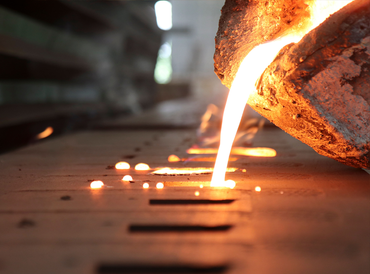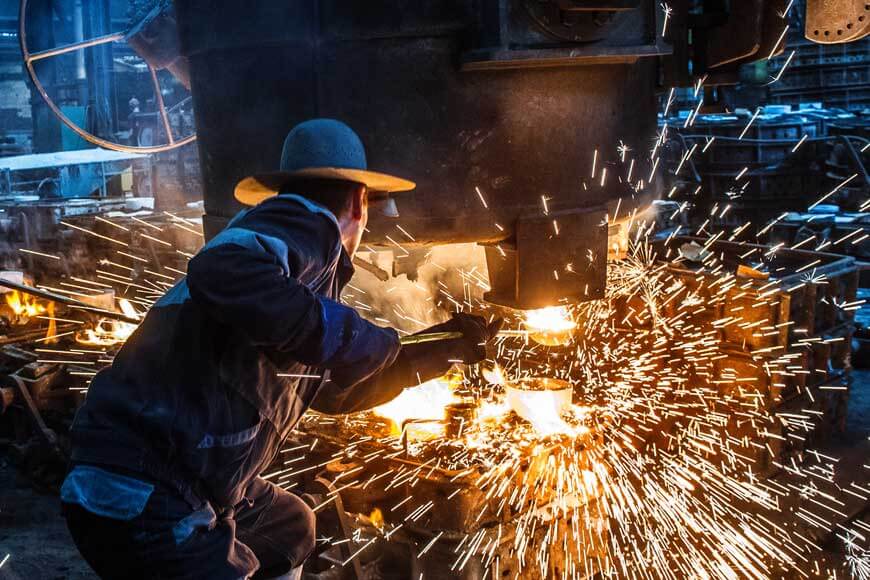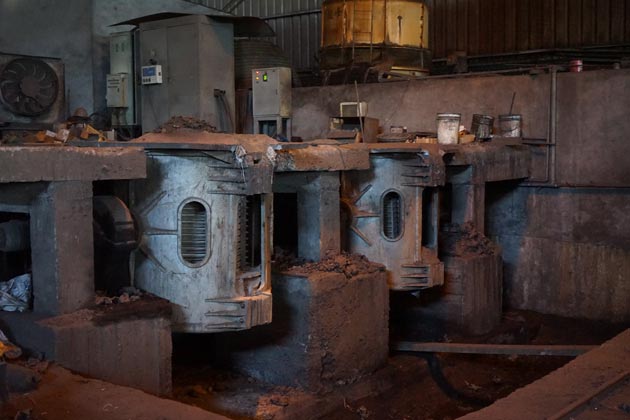Environmental impact in today’s Aluminum Foundry operations
Discover the Innovative Strategies Utilized in a Metal Foundry for Superior Casting Results
In today's competitive production landscape, metal foundries are increasingly embracing innovative strategies to improve casting results - Metal Foundry. Advanced computer system simulations allow for specific modeling of molten metal actions, while 3D printing allows rapid production of intricate molds. Furthermore, green products and automation improve procedures. These developments guarantee substantial improvements in effectiveness and quality control. The effect of these modern technologies on sustainability and manufacturing techniques stays to be completely explored.
Advanced Computer System Simulations in Metal Casting
Advanced computer system simulations have transformed the metal casting process by enhancing precision and efficiency. These sophisticated devices allow designers to create digital versions of actors components, allowing them to analyze and predict the actions of liquified metal throughout the casting stage. By mimicing numerous parameters such as temperature level, flow price, and air conditioning rates, makers can identify potential flaws before physical manufacturing starts.
This positive approach lowers waste and lessens expensive errors, inevitably causing enhanced item high quality. In addition, simulations help with the optimization of mold and mildew styles, making sure that they fulfill the particular requirements of each job. The integration of computational liquid characteristics (CFD) and limited element evaluation (FEA) further contributes to the precision of these simulations, supplying understandings that were previously unattainable. Therefore, progressed computer system simulations have actually become a crucial component of modern-day metal foundries, significantly progressing the market's capabilities.
3D Printing for Mold And Mildews and Patterns
3D printing has become a groundbreaking method for creating molds and patterns in the metal foundry sector. This modern technology makes it possible for the rapid manufacturing of intricate geometries that standard production methods struggle to accomplish. By utilizing additive production, foundries can develop elaborate designs with decreased preparations and material waste. The capacity to produce mold and mildews on demand enables better versatility in layout versions, helping with faster prototyping and modifications.
Moreover, 3D printing can use a range of products, including plastics and metals, tailored to details casting requirements. This adaptability boosts the precision of molds, leading to premium casting outcomes with boosted surface finishes. Furthermore, the decrease in the number of components needed streamlines assembly procedures, additionally optimizing manufacturing effectiveness. As foundries remain to embrace 3D printing, they are poised to redefine industry requirements, leading the way for innovation and improved productivity in metal casting procedures.
Eco-Friendly Products and Processes
As the metal foundry market deals with boosting pressure to minimize its environmental footprint, the adoption of green products and processes has come to be essential. Factories are now exploring lasting alternatives to conventional products, such as utilizing bio-based binders and recycled metals. These products not just reduce waste but additionally reduced energy intake throughout production.
In addition, developments in sand casting techniques have led to the usage of synthetic sands that are much less damaging to the atmosphere. Factories are also carrying out ingenious procedures like molten metal treatment that lowers discharges and enhances the quality of cast products.
Water-based finishings have actually replaced harmful solvents, advertising a safer work environment. By integrating these eco-friendly methods, metal foundries can noticeably decrease their eco-friendly effect while keeping top notch spreading results. This change not only benefits the environment however additionally aligns with the expanding consumer need for sustainable manufacturing options
Automation and Robotics in Foundry Operations
While the metal foundry industry accepts innovation, the assimilation of automation and robotics is changing operations considerably. Automated systems simplify processes such as mold production, metal putting, and casting finishing, significantly improving performance. Robotics assist in the handling of hefty materials, decreasing the danger of office injuries and making address certain safer settings.

Additionally, making use of automated directed vehicles (AGVs) enhances product transport within centers, making sure timely delivery of parts to suitable workstations. By implementing these modern technologies, foundries can adapt to varying demands with greater dexterity, inevitably causing boosted profitability and competition in the marketplace. As automation and robotics remain to progress, they hold the prospective to redefine traditional foundry practices and drive additional developments in casting strategies.
Real-Time Surveillance and Quality Assurance Techniques
The improvements in automation and robotics have actually led the way for extra sophisticated techniques to quality control in metal foundries. Real-time surveillance systems utilize innovative sensing units and data analytics to track crucial criteria throughout the casting process. These systems continually examine variables such as stress, temperature, and material make-up, making it possible for instant discovery of inconsistencies from established standards.
Quality assurance strategies now incorporate artificial intelligence algorithms that evaluate historical information to anticipate prospective defects before they happen. This aggressive strategy lessens waste and enhances general manufacturing efficiency. In addition, integrated responses loops permit fast modifications, making sure that each casting satisfies rigid quality demands.
The implementation of digital doubles-- virtual replicas of physical assets-- has actually additionally changed quality control, permitting engineers to imitate and enhance procedures in real-time. Together, these innovative methods substantially boost the integrity and top quality of spreadings, establishing brand-new industry standards in metal foundry procedures.
Regularly Asked Questions
What Kinds of Metals Are Typically Cast in Foundries?
Commonly cast steels in foundries include light weight aluminum, bronze, iron, and brass. Each metal shows special homes, making them suitable for various applications, such as automobile components, machinery, and imaginative sculptures, enhancing their convenience in production.

The length of time Does the Casting Process Commonly Take?
The spreading process commonly takes several hours to days, relying on factors such as the intricacy of the mold and mildew, kind of metal made use of, and cooling demands. Each stage affects the overall period helpful hints noticeably.
What Security Actions Are in Place for Foundry Employees?

Exactly how Are Flaws in Castings Identified and Addressed?
Flaws in castings are identified via aesthetic examinations and non-destructive screening approaches. As soon as detected, foundry workers resolve them by fine-tuning processes, adjusting product structures, and executing corrective procedures to ensure high quality and compliance with criteria.
What Is the Cost Range for Metal Casting Services?
The price look at this website variety for metal casting solutions commonly varies in between $1 to $10 per extra pound, depending upon factors such as product type, complexity of the layout, and production volume, affecting overall pricing considerably.
In today's competitive production landscape, metal foundries are progressively adopting cutting-edge methods to enhance casting results. As the metal foundry industry faces enhancing pressure to lower its ecological footprint, the fostering of green materials and processes has actually become crucial. Factories are currently exploring lasting alternatives to standard materials, such as utilizing recycled metals and bio-based binders. By integrating these environment-friendly practices, metal foundries can substantially reduce their eco-friendly impact while keeping premium spreading outcomes. The advancements in automation and robotics have actually paved the method for extra innovative methods to top quality guarantee in metal foundries.